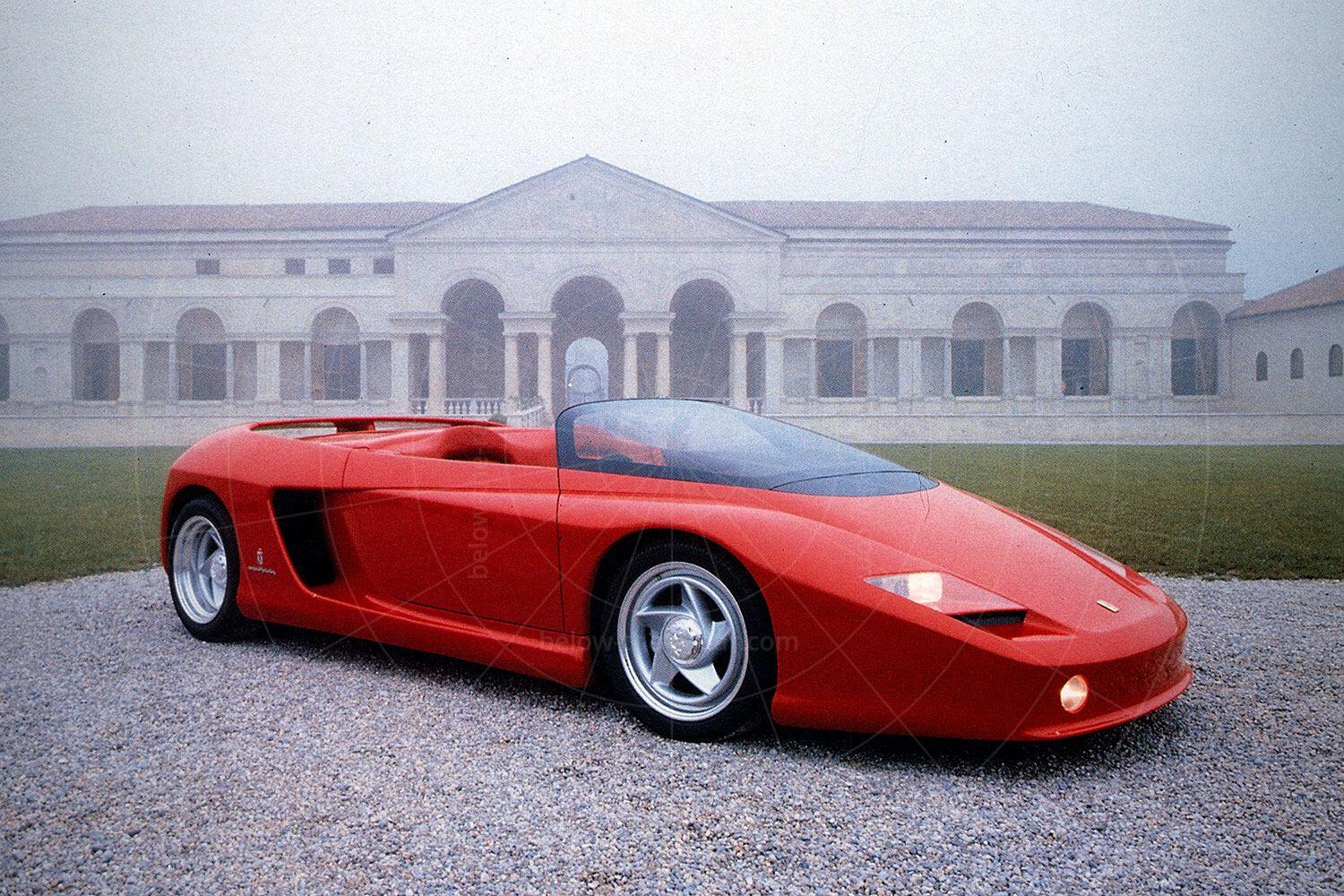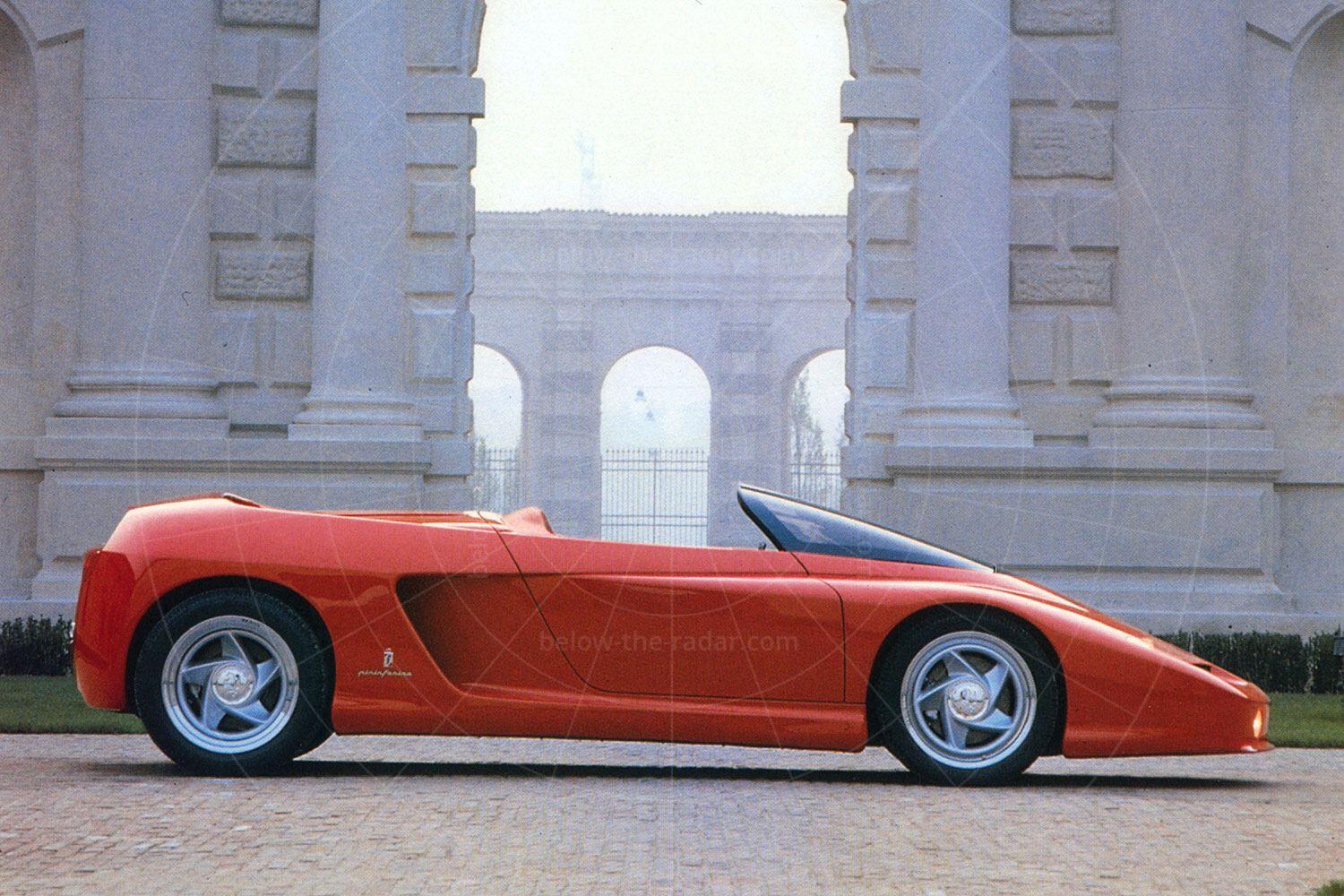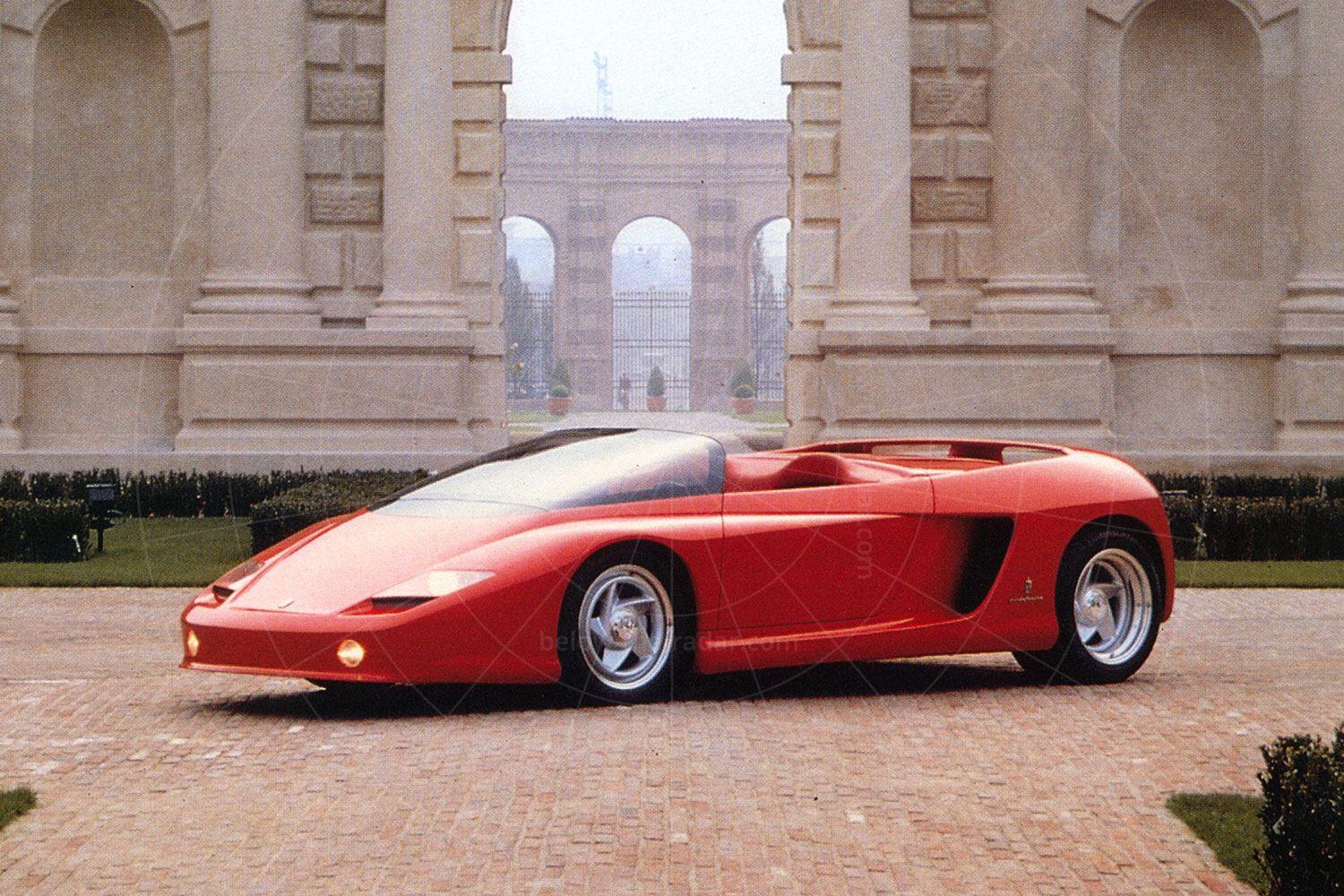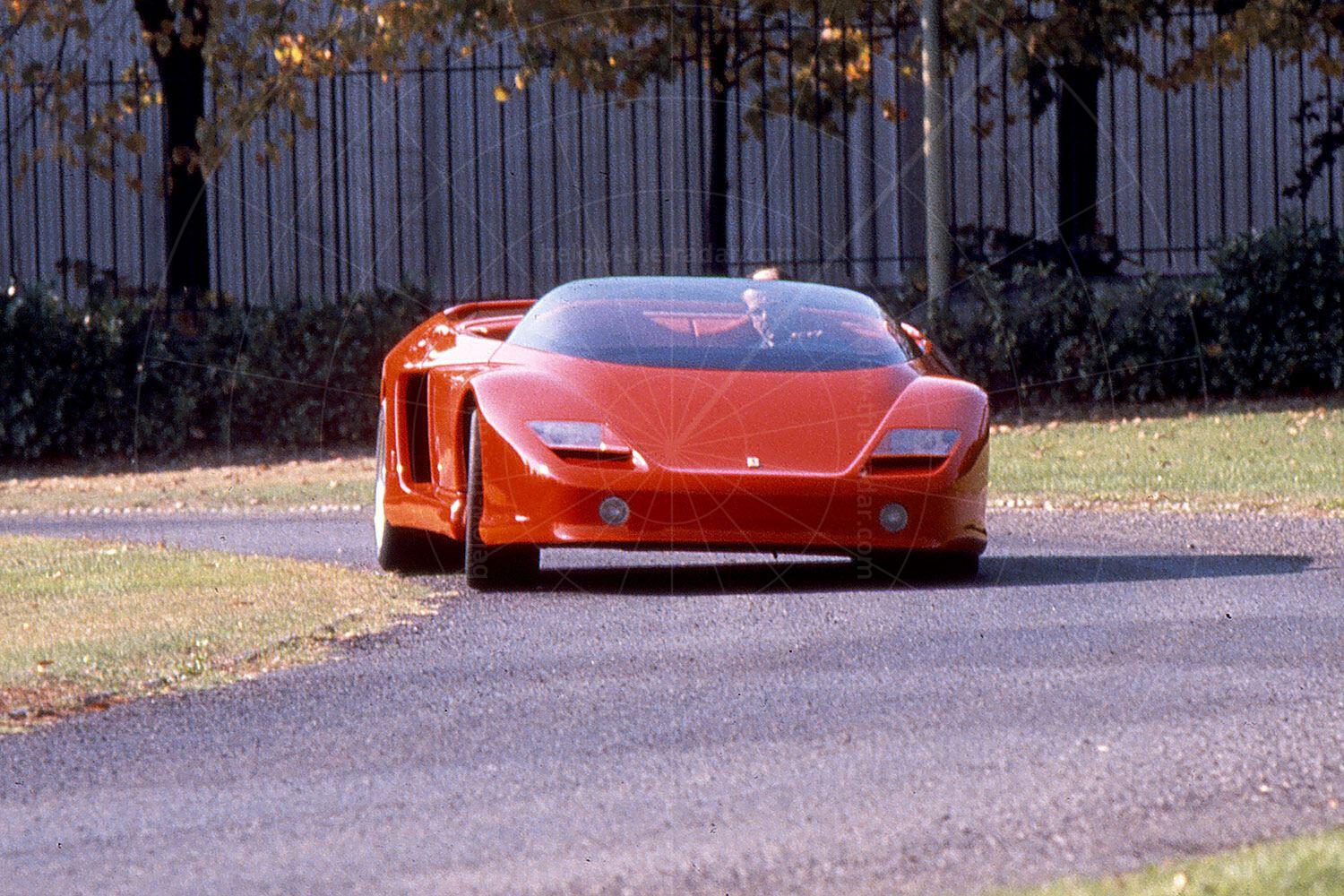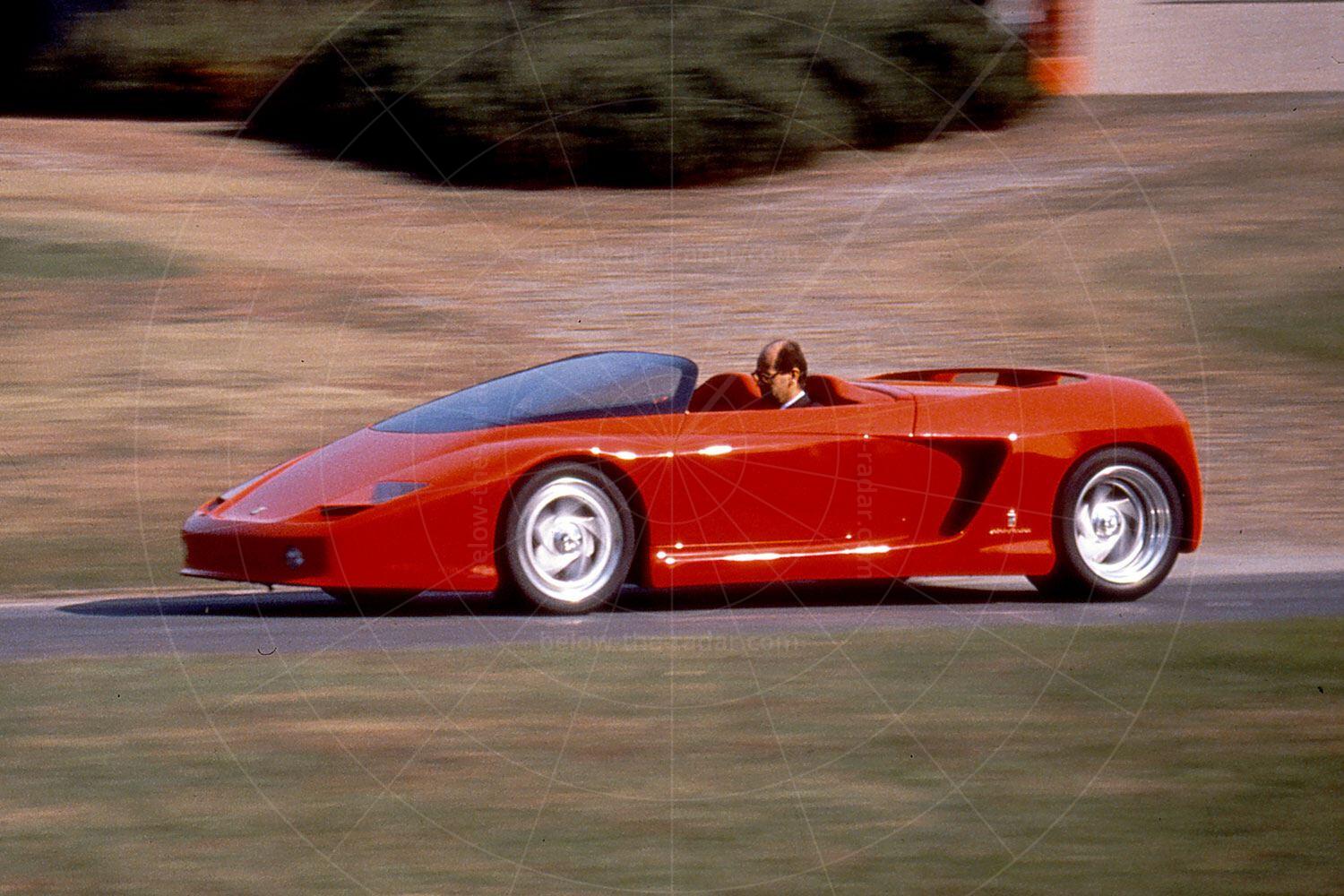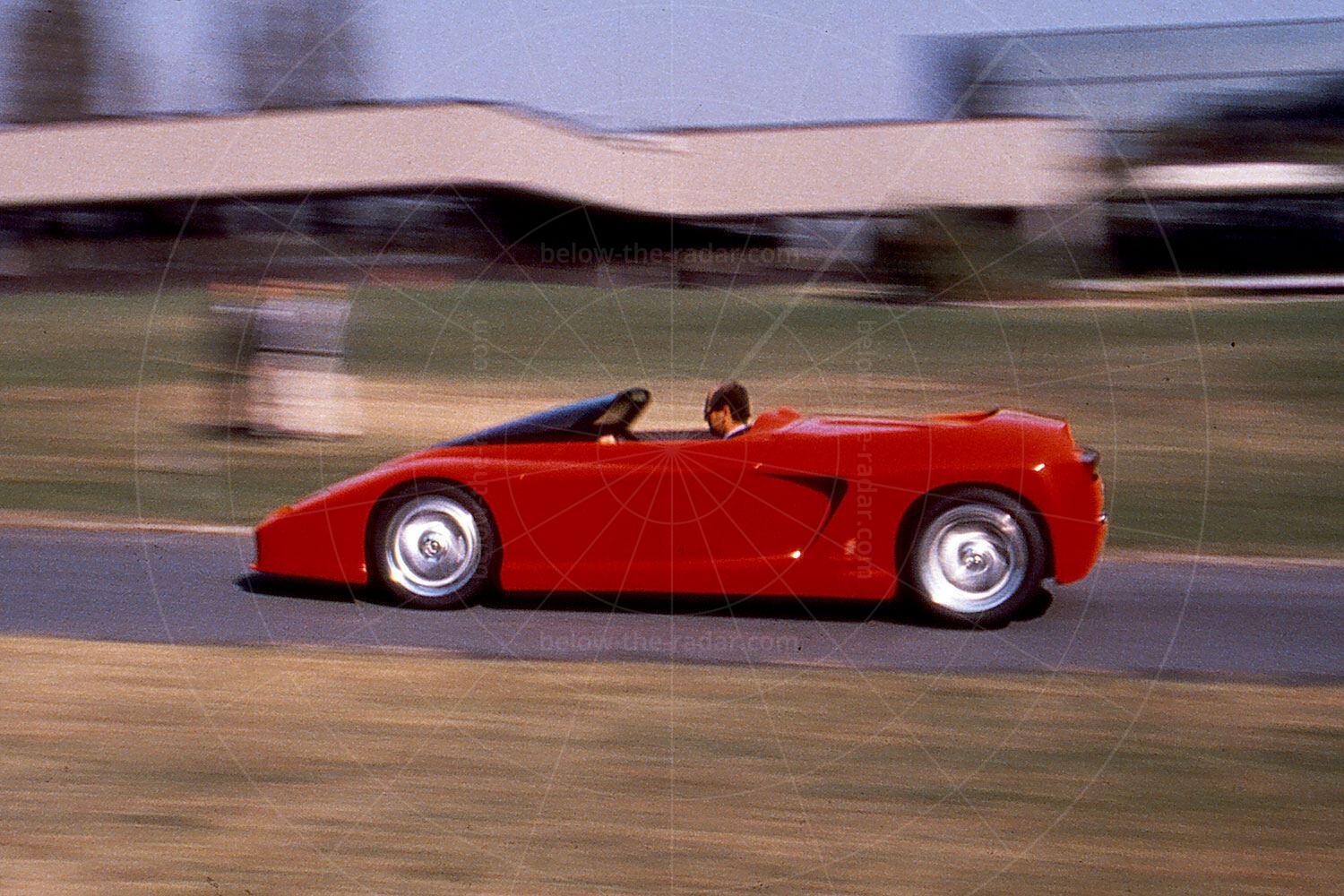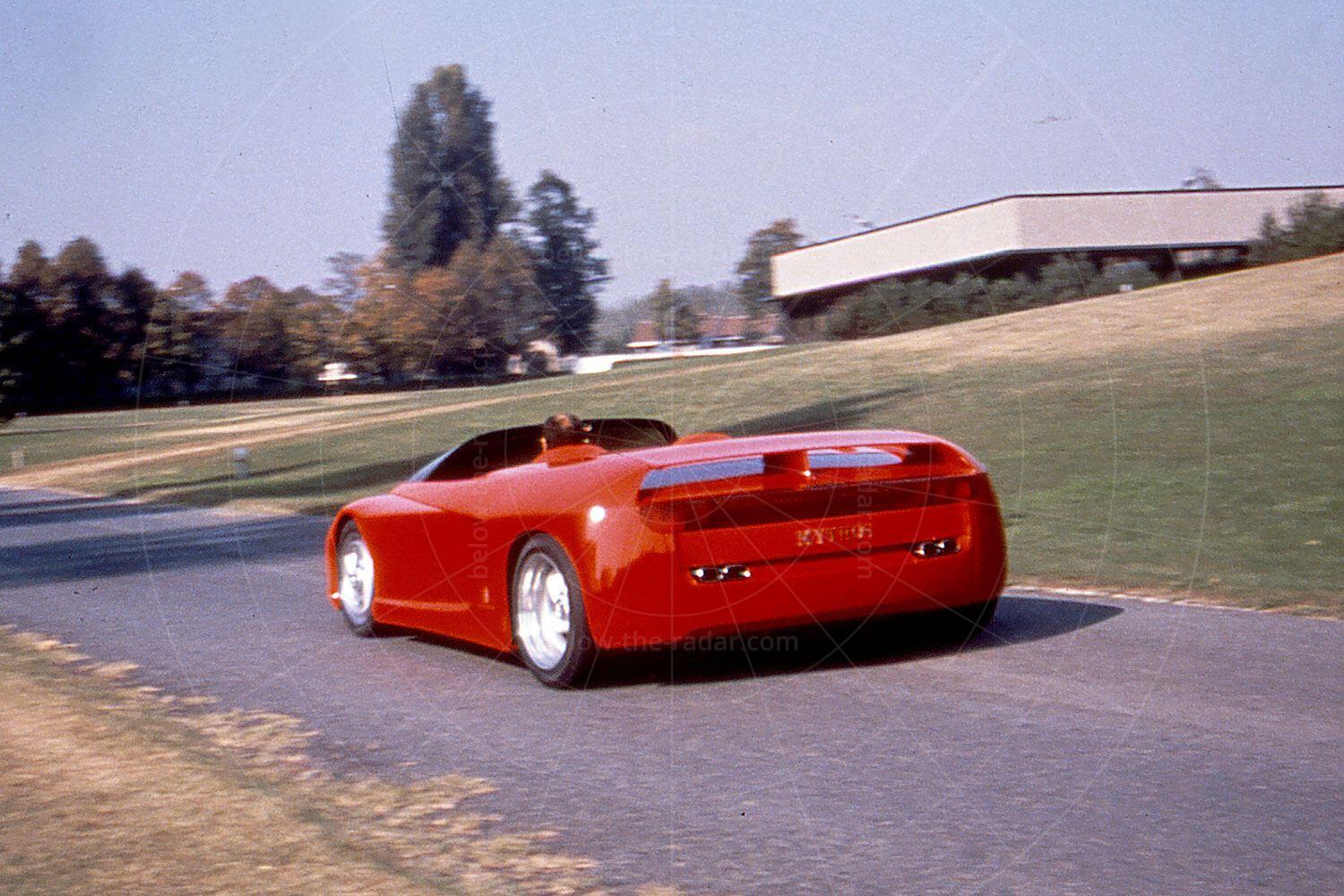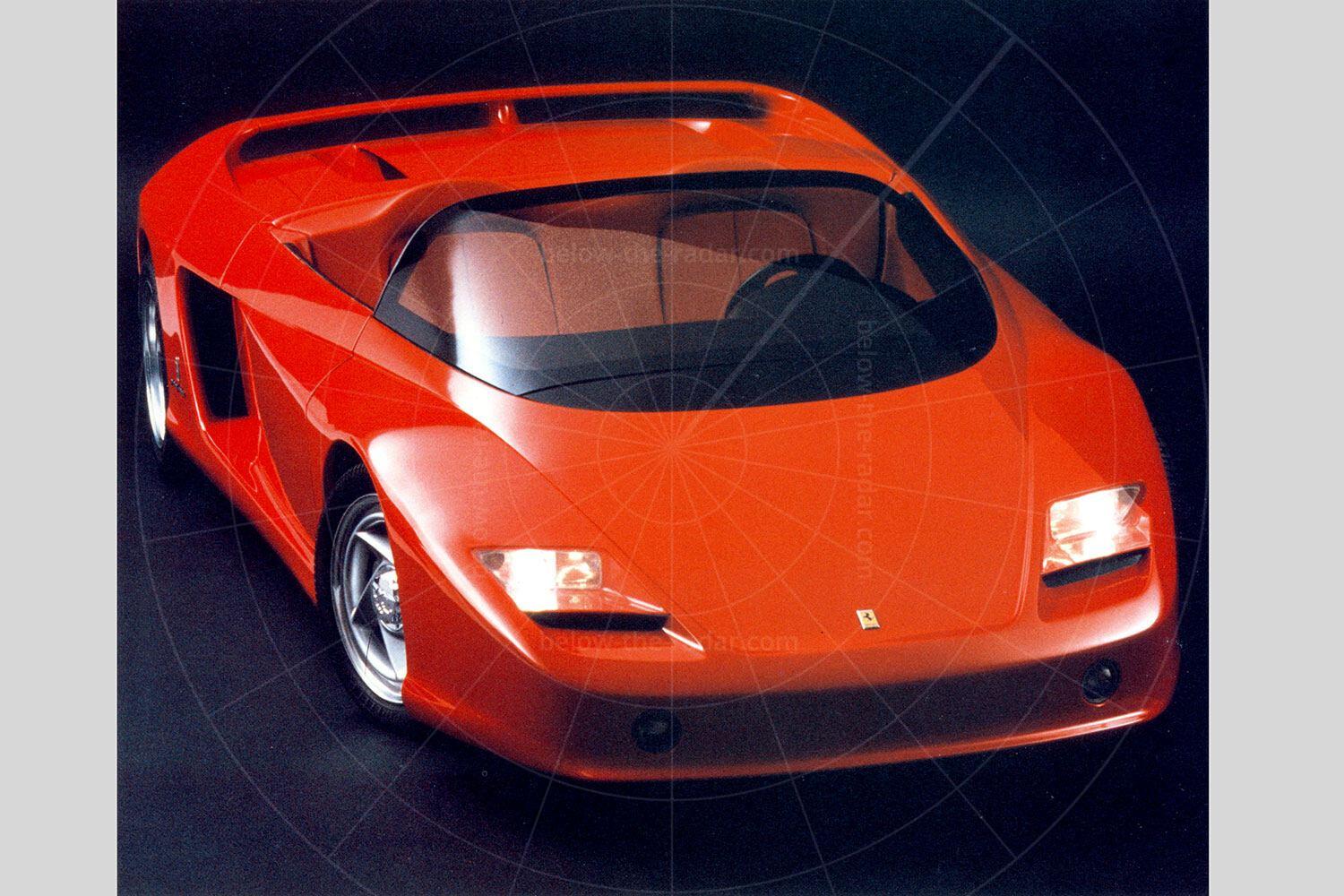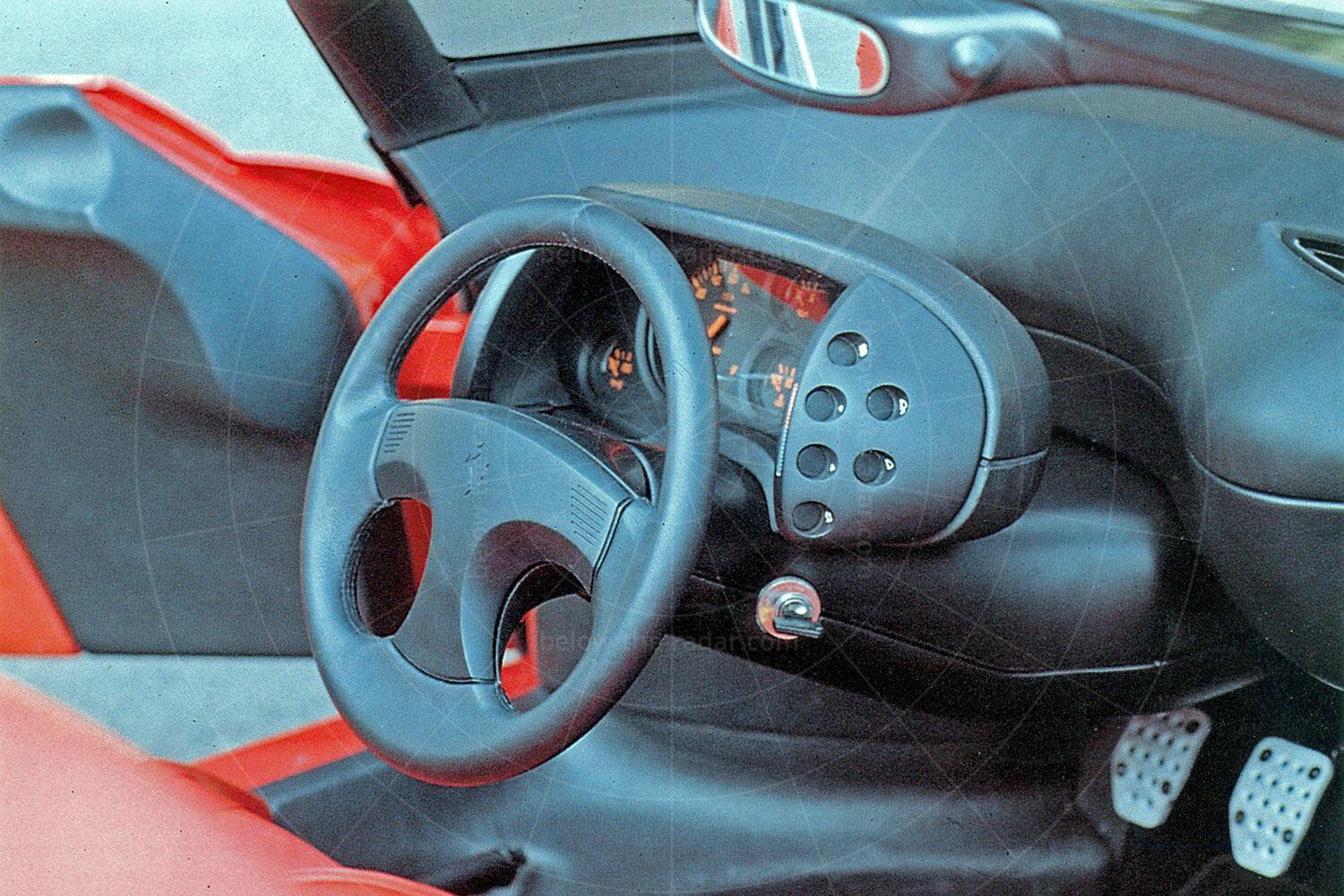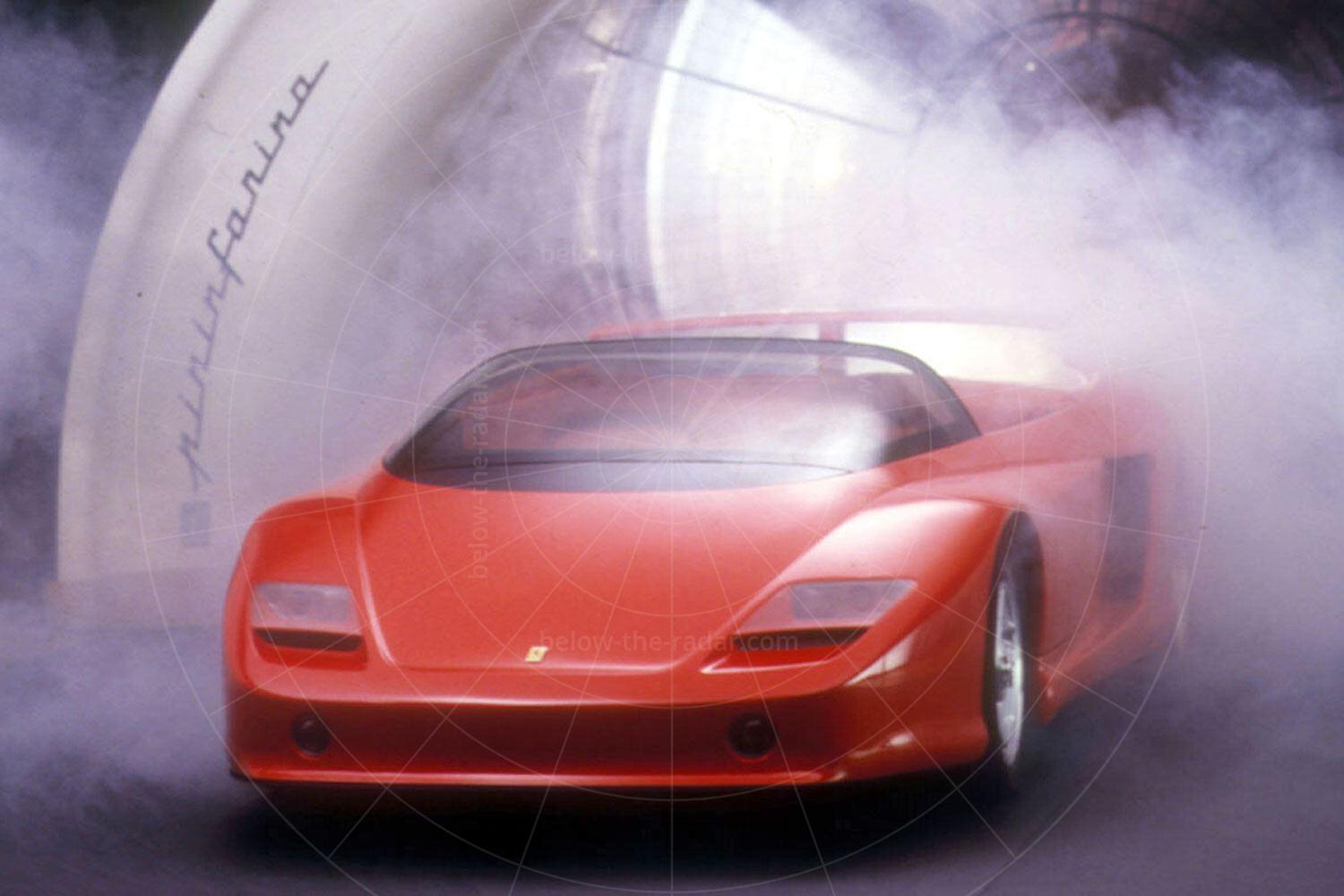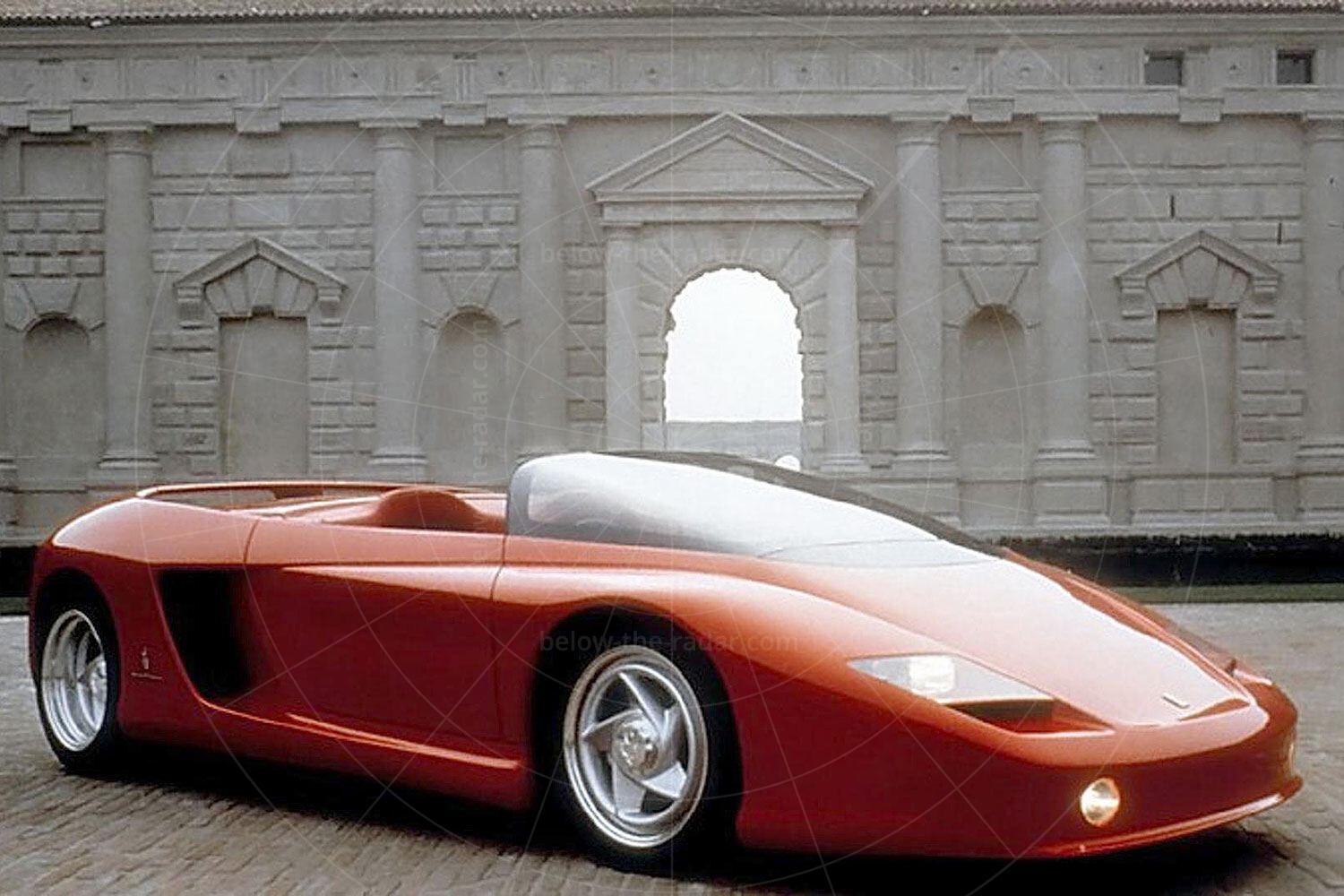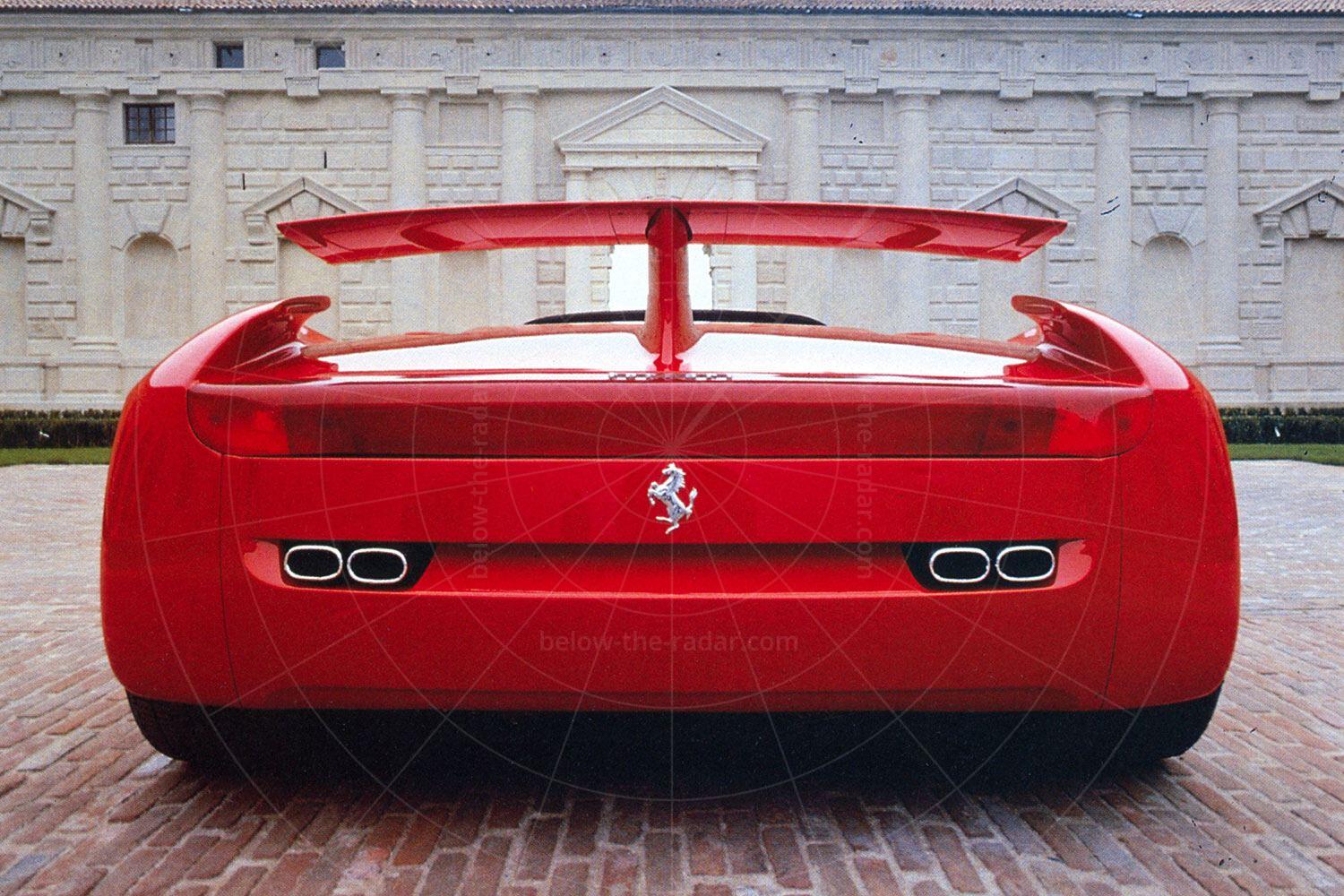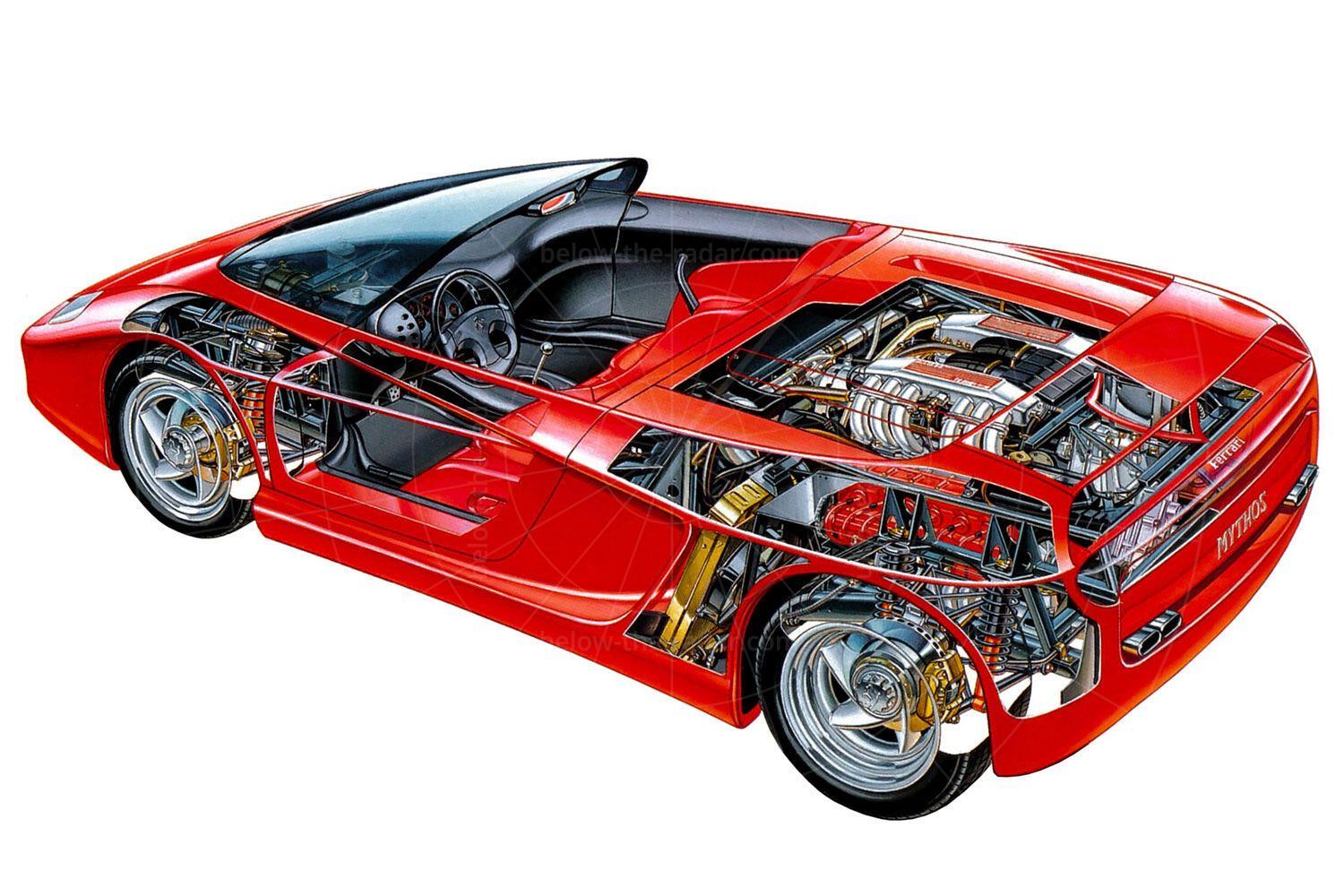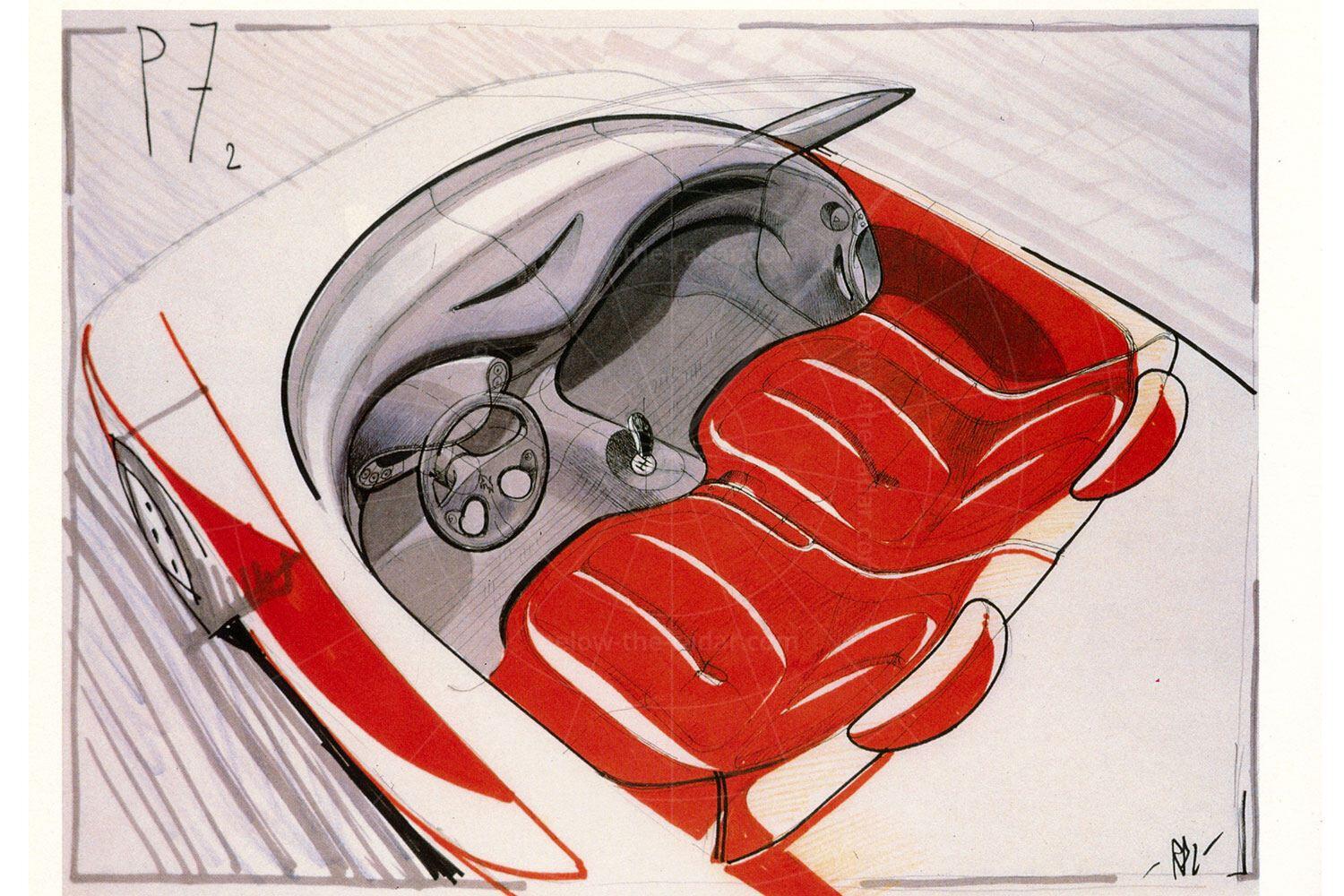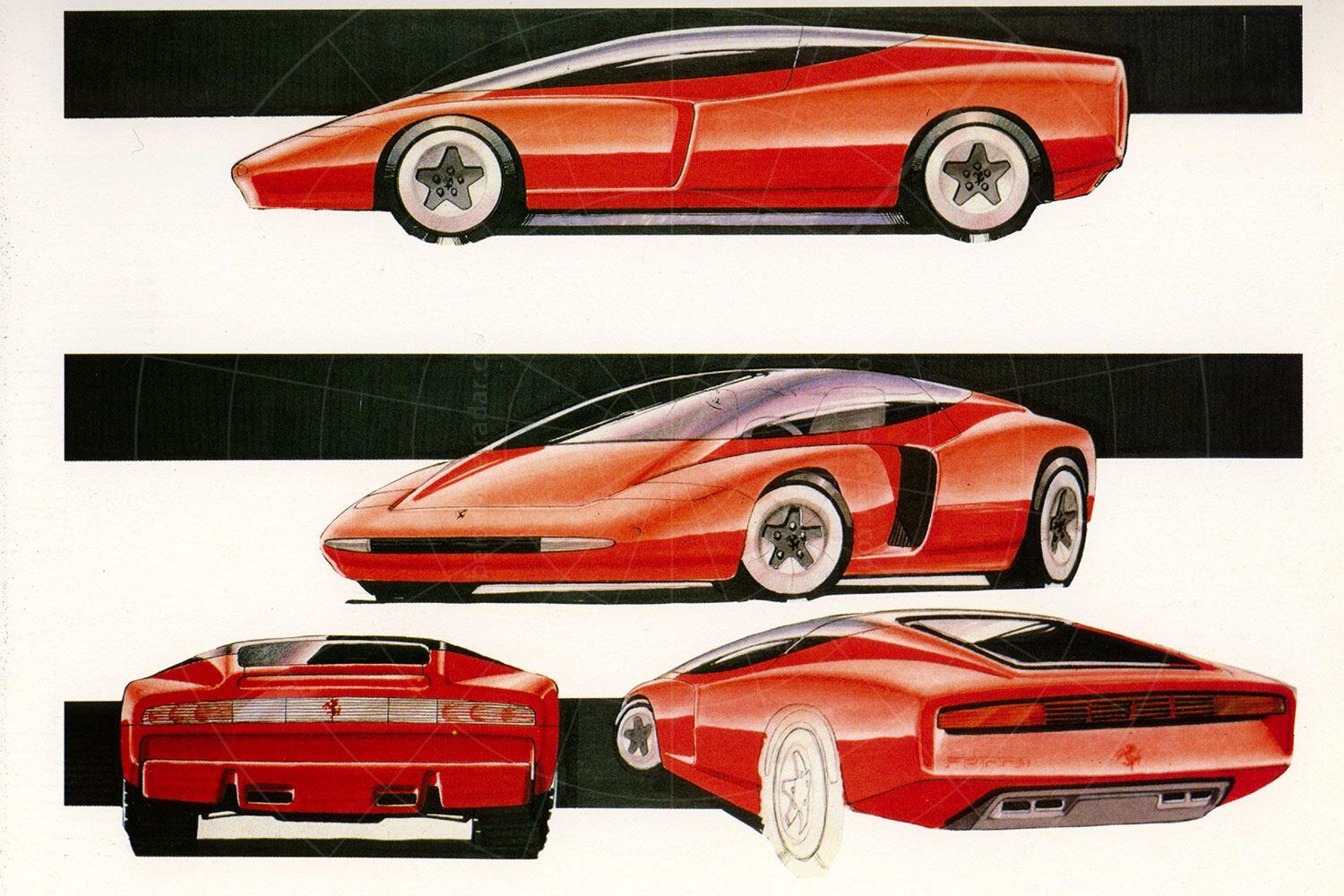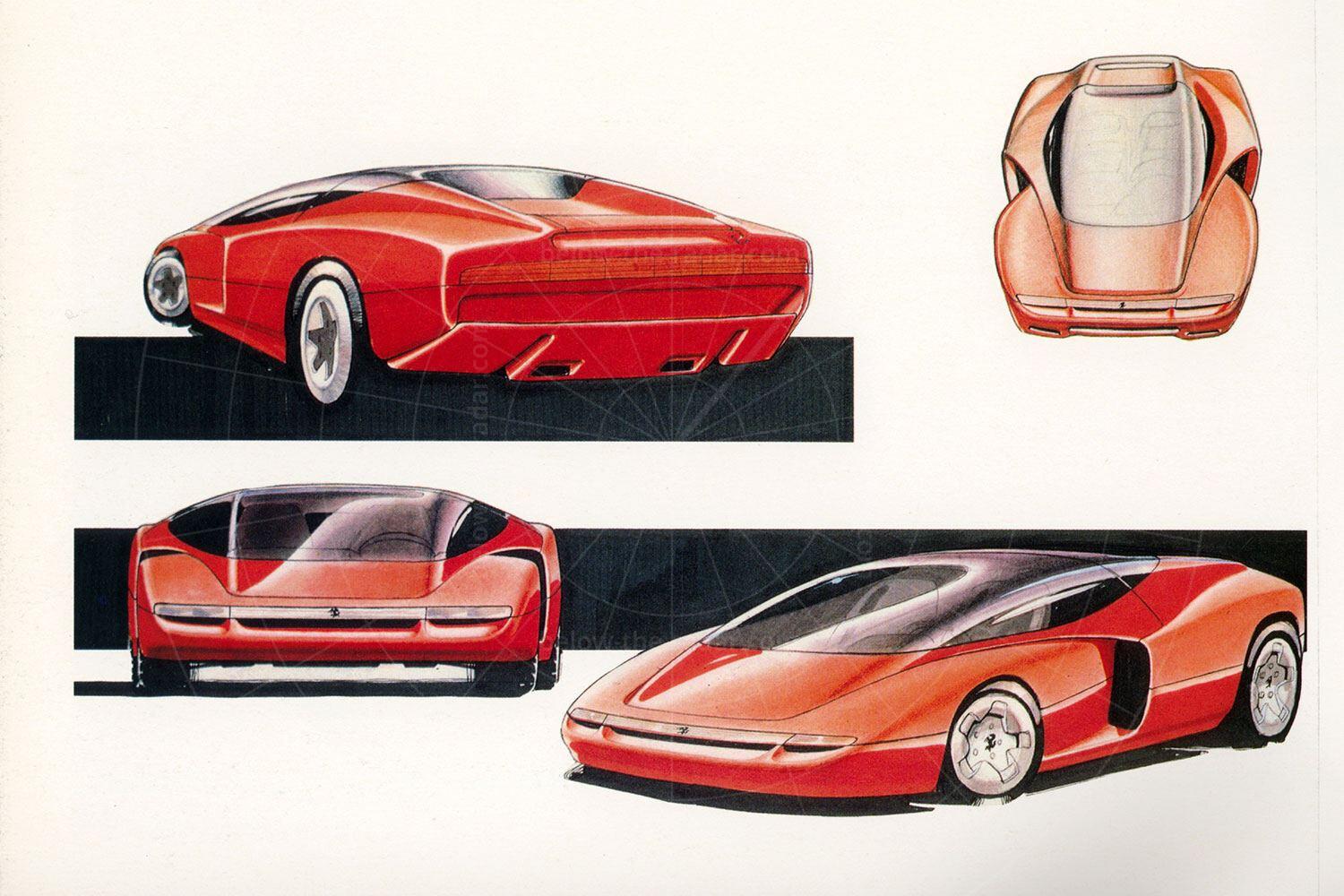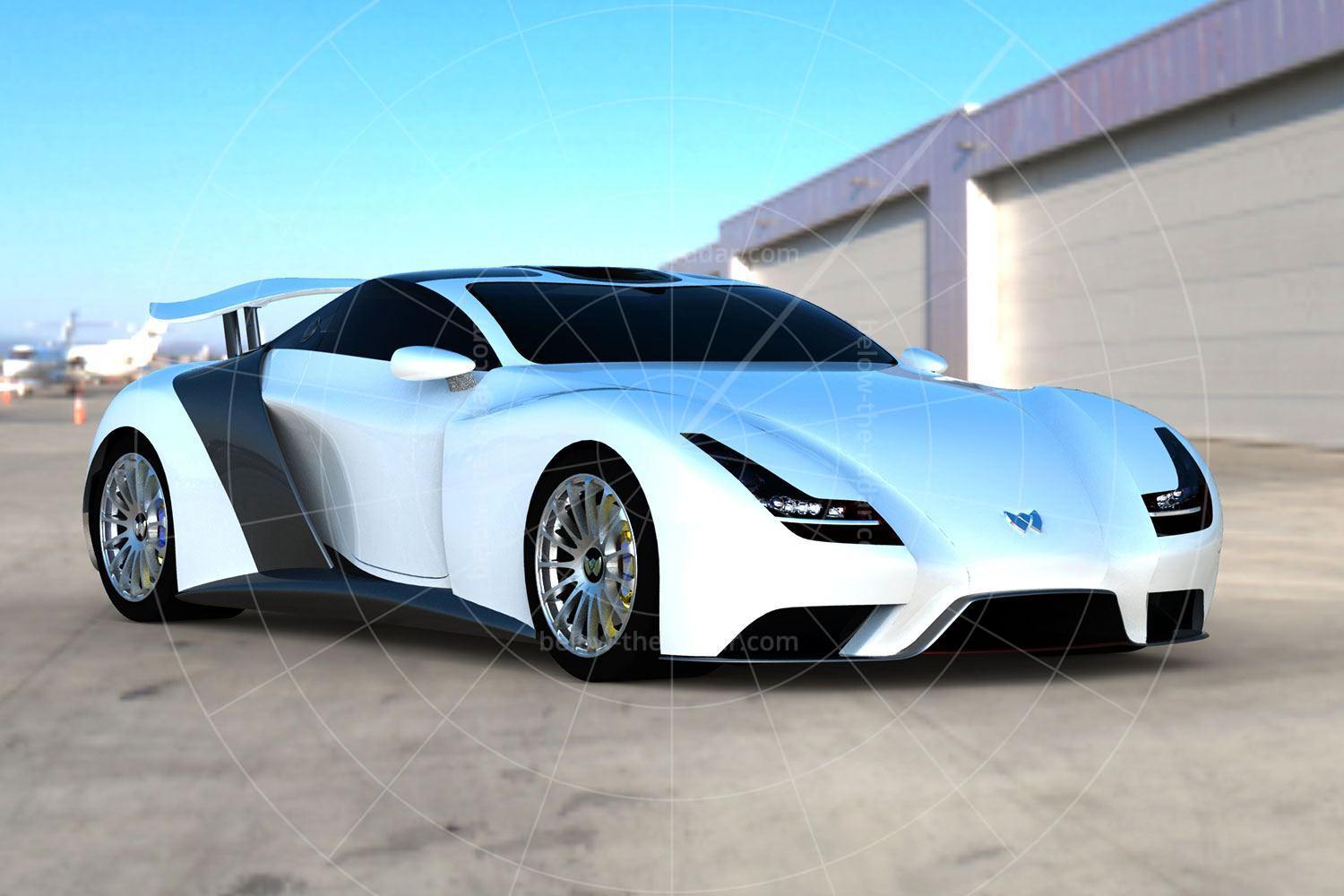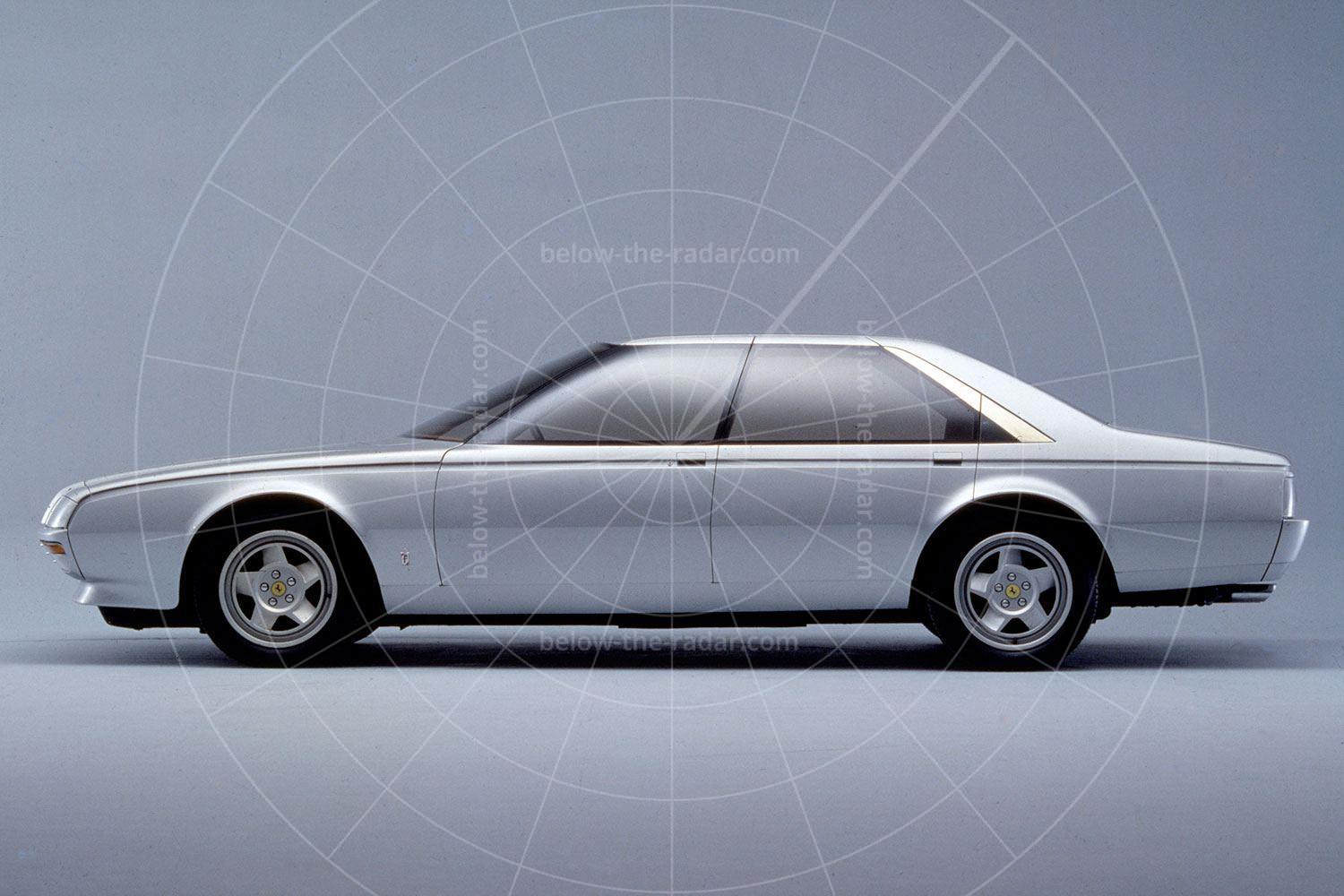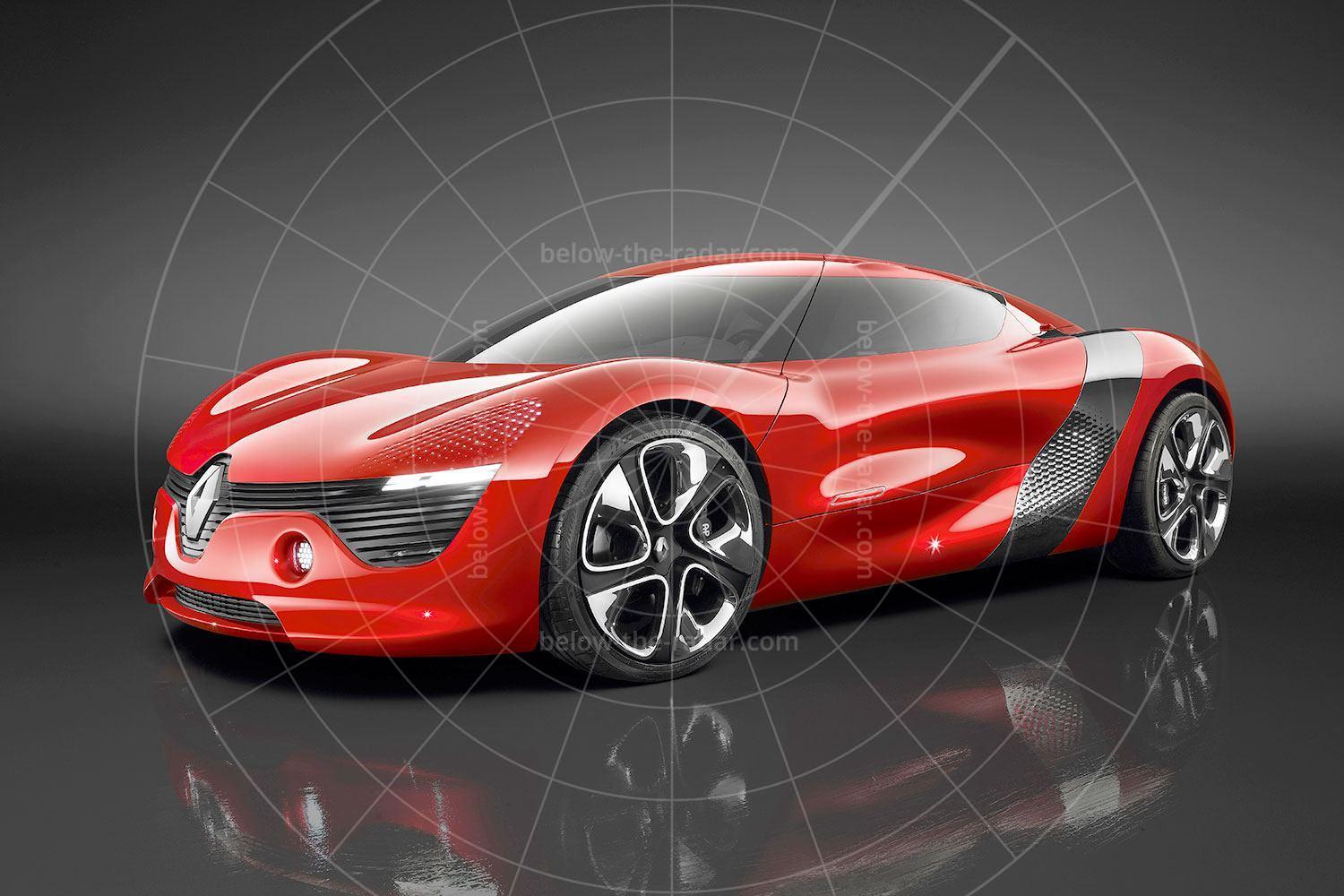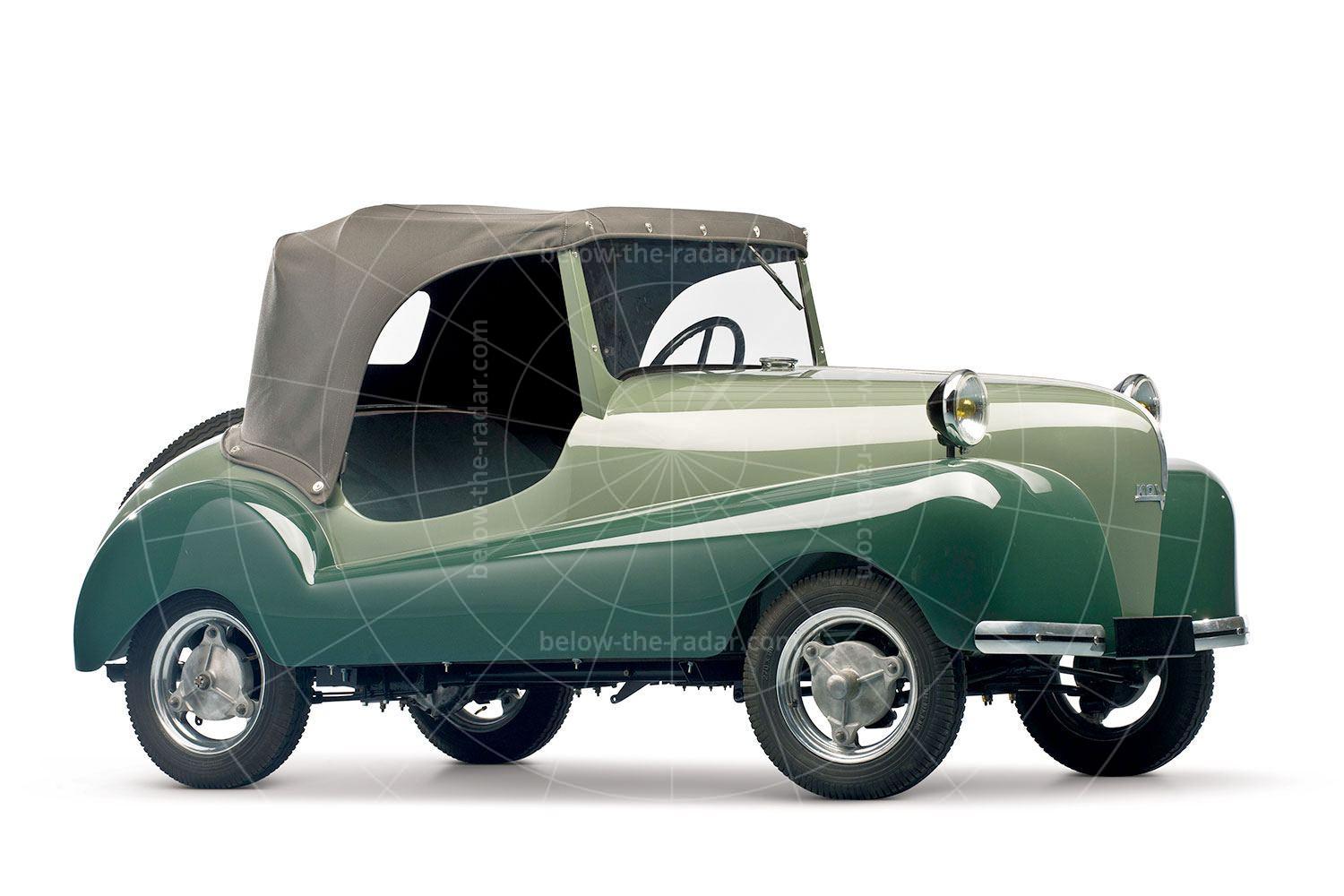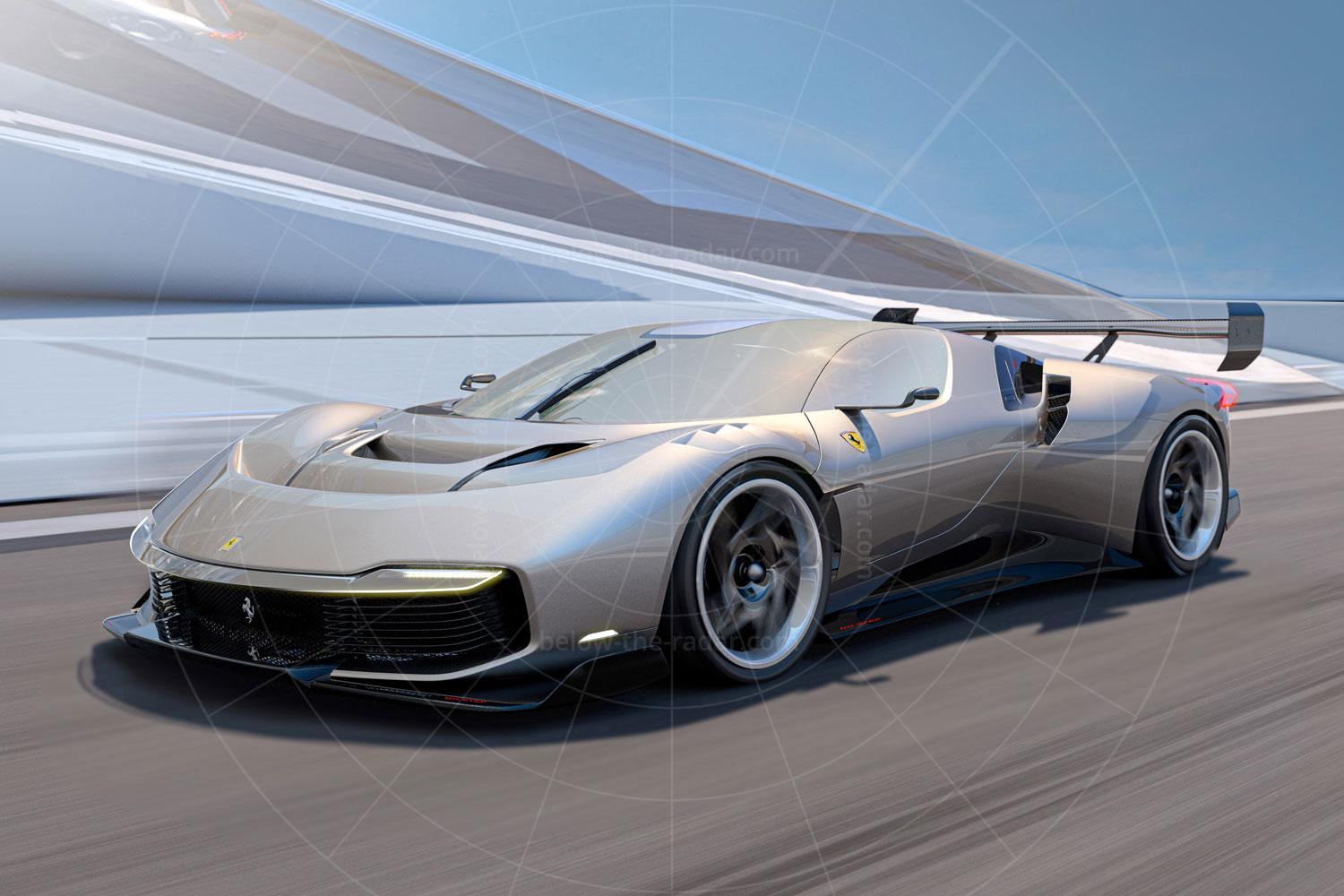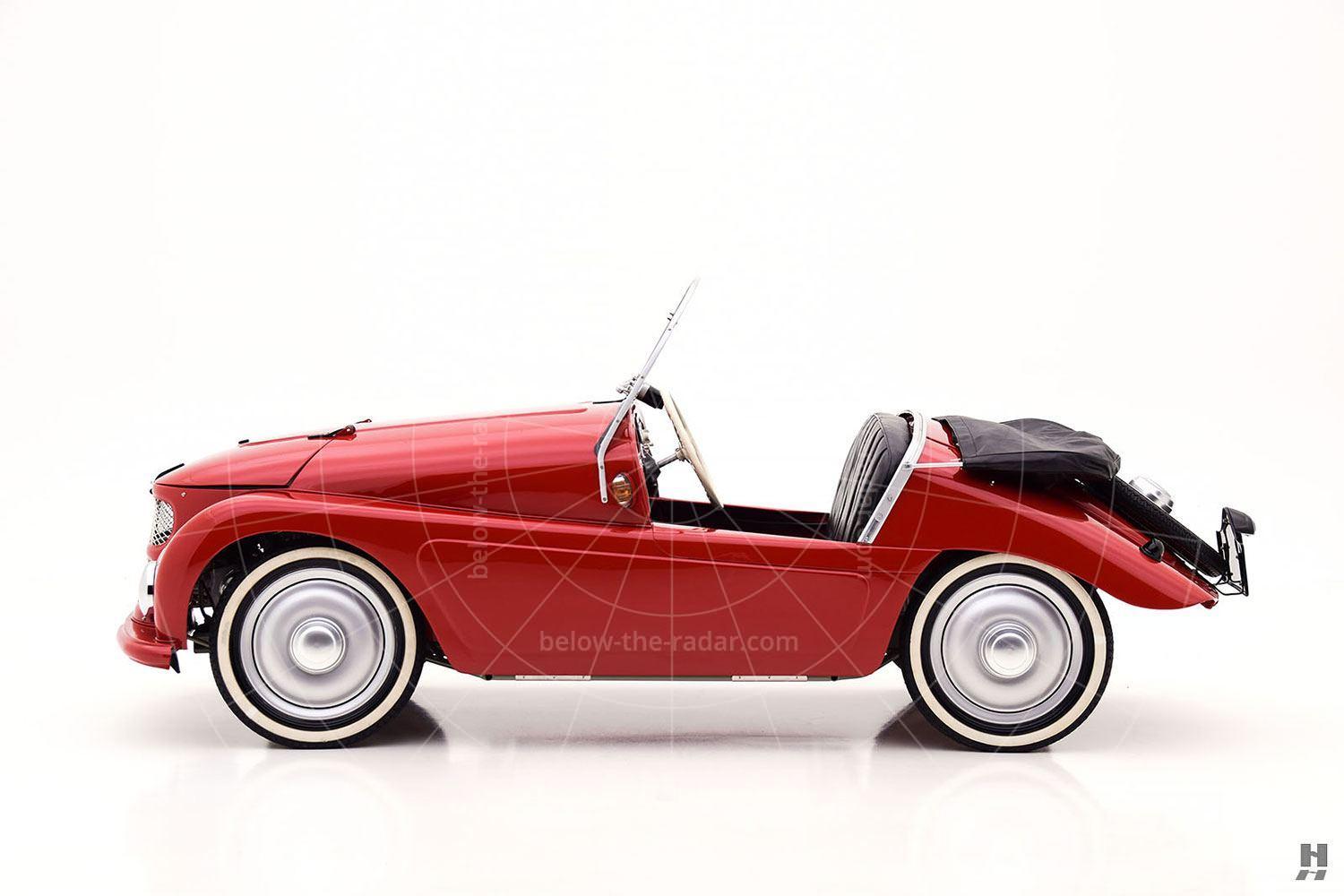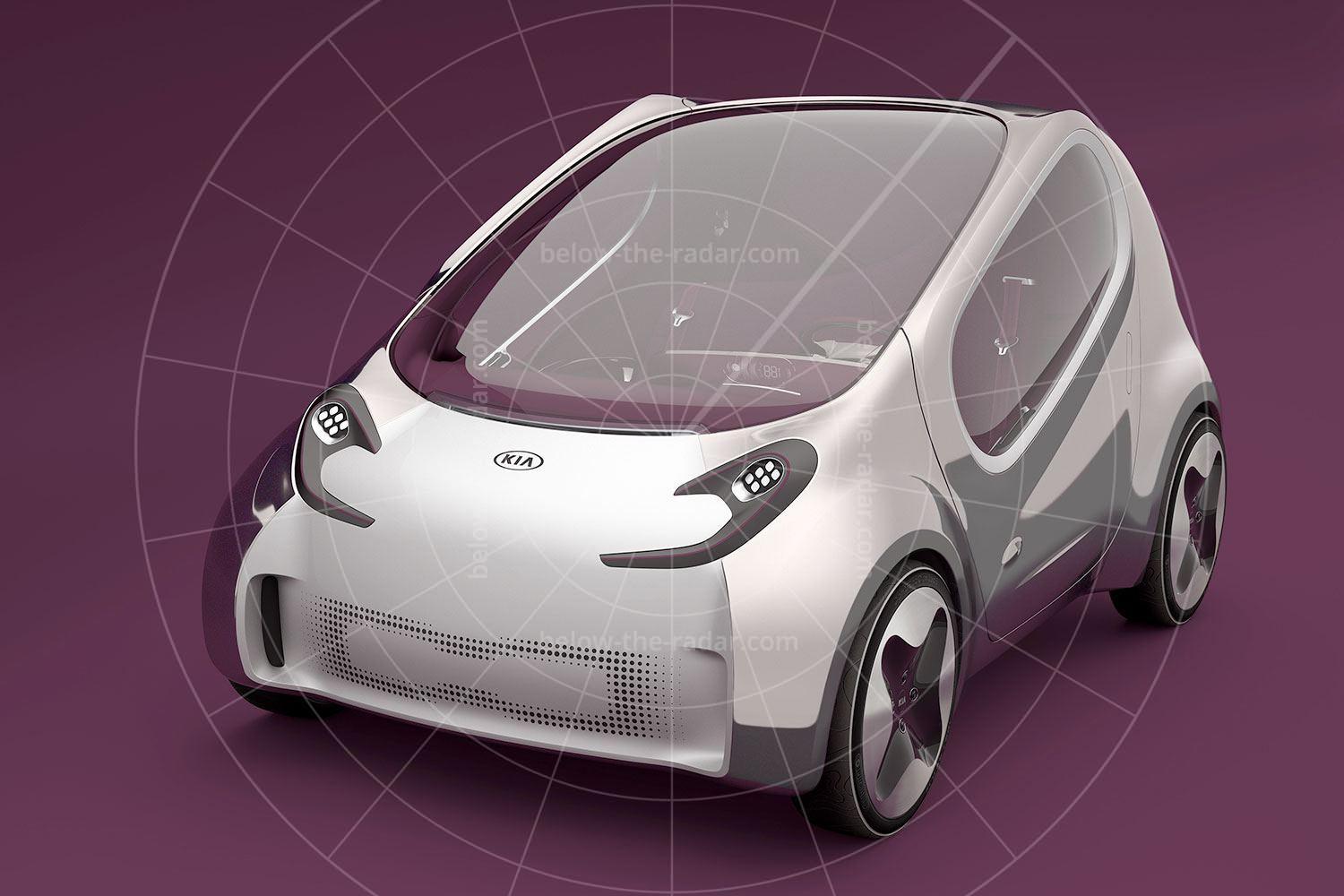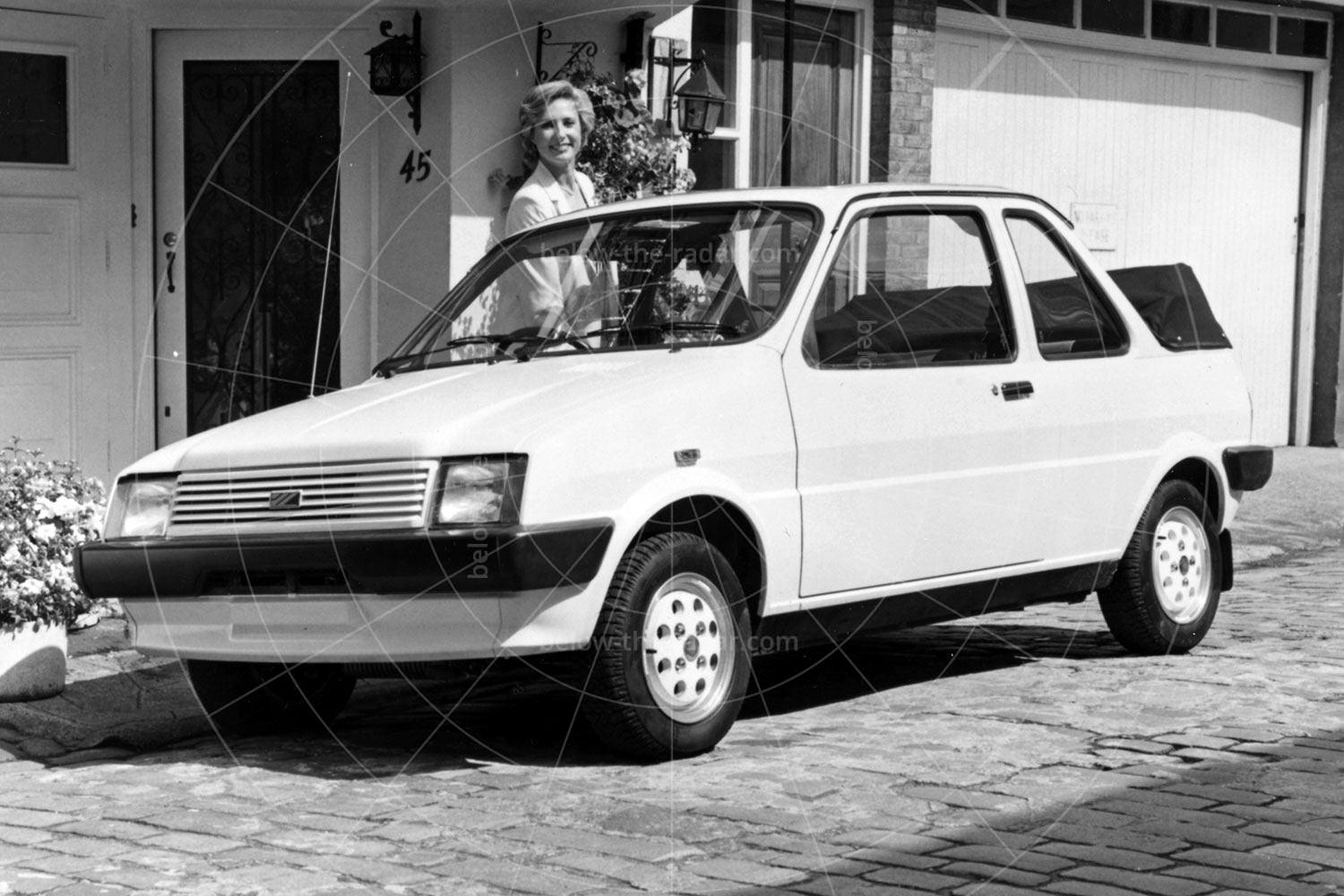When Pininfarina based a concept on a Ferrari Testarossa chassis, there could be only one outcome – a supercar testbed which took the best that the Ferrari had to offer and made it even better. To that end the 390bhp 4942cc flat-12 of the Testarossa was carried over, along with the transmission and suspension, steering and brakes. But whereas the Ferrari wasn’t noted for its looks, which were dramatic but not beautiful, the Mythos was a lot more pretty. And while it was claimed that the Mythos would never go into production in any form, certain elements of it would be incorporated into future production Ferraris.
Pininfarina had started designing Ferraris in 1952, and although other design houses had styled some Ferraris, it’s Pininfarina which is synonymous with styling the cars that bear the hallowed prancing horse badge. But while previous Ferraris had been all about flowing lines – or as Pininfarina called it, linked panels – the Mythos was about the relationship between volumes. By that Pininfarina meant that because the engine and radiators of the car were at the back, the track of the car was much narrower at the front. And where the Testarossa hid this with its famous side strakes that bridged the gap between the narrow front and the wide rear, the huge side scoops of the Mythos emphasised this difference.
The wheelbase of the Mythos was the same as the Testarossa’s, but the length was around 170mm shorter due to much less rear overhang. This emphasised the ‘cab-forward’ look of the car, a trend which became increasingly prominent during the 1990s. The side view was dominated by the layered construction (made necessary by the rear-mounted radiators) while the leading edge of the front spoiler moved forward by an inch at high speed, to increase downforce.
Echoing the pronounced front spoiler were the sills, which then blended into those bulbous rear wings which housed massive 17-inch wheels wrapped in 335/25 ZR17 Pirelli PZero rubber. Like the front spoiler, the rear fin moved according to how fast the Mythos was being driven, with up to 12 inches of vertical adjustment available. When the car was stationary it looked as though a hoop spoiler was fitted, while at top speed it looked more like an aircraft’s tail fin. It was somewhat bizarre, but highly effective.
The key to the exterior design of the Mythos was the integration of everything – the headlights, bumpers and spoilers all fitted in seamlessly, rather than being used for decoration, and it worked so much better for it. Even the wheels, which were made specially for the car by OZ, were fitted with centre caps that merely displayed the Ferrari emblem; there were no wheel nuts on show.
This clean design philosophy continued inside the Mythos, with the bare minimum of trim or instrumentation to distract. Inspired by the sports racers of the 1960s there was just a pair of wrap-around seats, few dials and minimalist trim panels. And of course there was no entertainment system necessary as there was a 12-cylinder engine just inches away which would provide the perfect soundtrack. The same colour schemes were also in evidence with everything either black or red, with leather used to cover just about every surface.
The Mythos was significantly lighter than the Testarossa, thanks to its carbonfibre construction. A massive 255kg was shed in the transformation from Testarossa to Mythos, which left the car with a kerb weight of 1252kg. But despite this useful loss of weight, the top speed of the concept was rather lower than the donor car due to the inferior aerodynamics. Still, a top speed of 160mph should have been enough for most who drove it, bearing in mind things could start to get a bit chaotic at that sort of speed when there was no roof of any kind.
| Vital statistics | |
|---|---|
| Debut | Tokyo, 1989 |
| Designer | Lorenzo Ramaciotti |
| Engine | Mid-mounted, 4942cc, flat-12 |
| Transmission | 5-speed manual, rear-wheel drive |
| Power | 390bhp |
| Top speed | 160mph approx |

